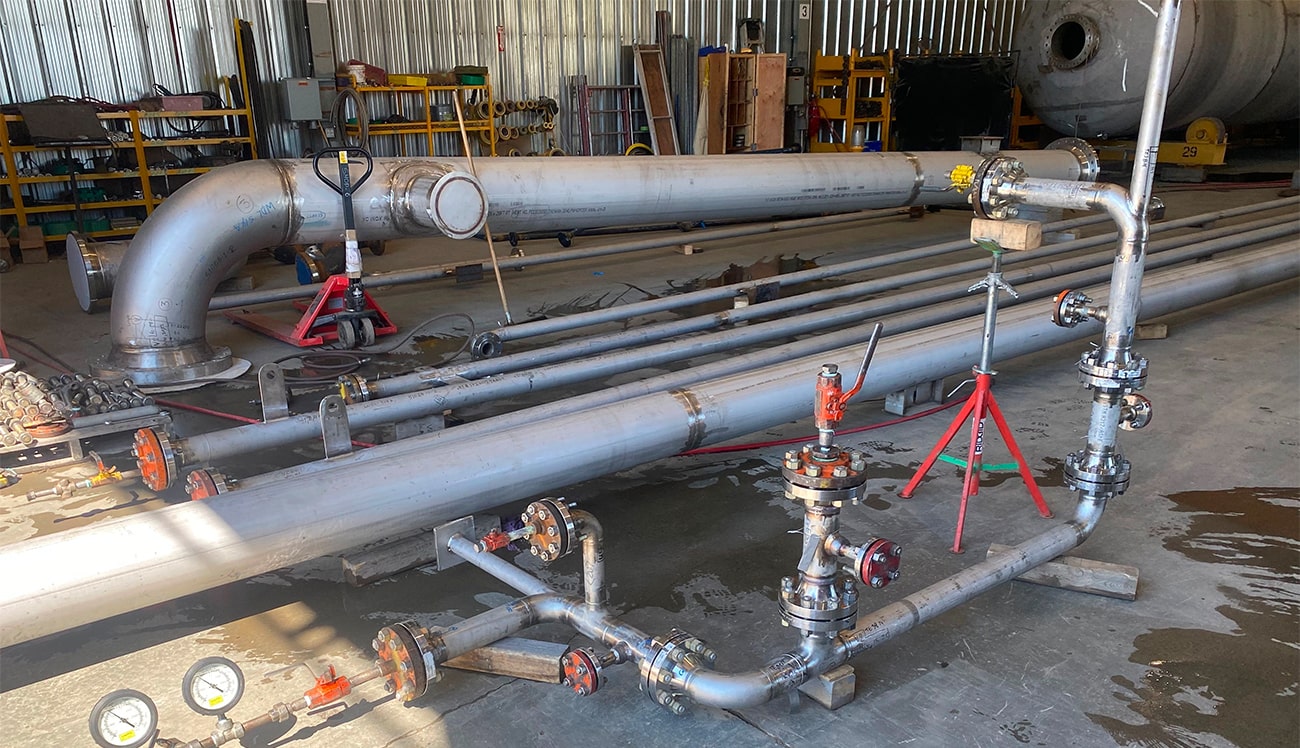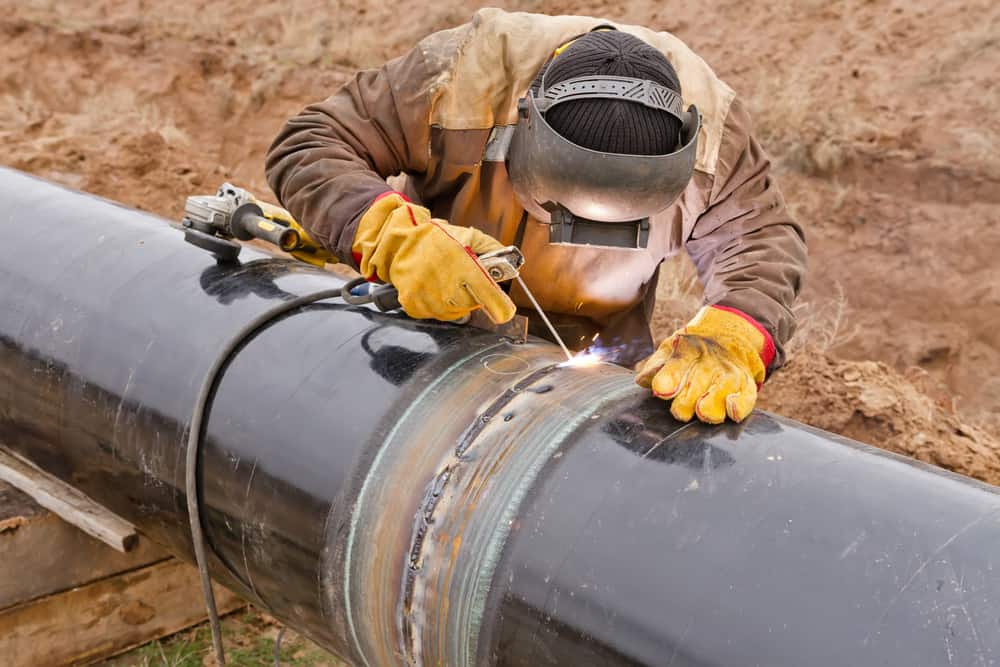Pipeline Welding Inspection: Guarding Pipelines with Accuracy and Expertise
Pipeline Welding Inspection: Guarding Pipelines with Accuracy and Expertise
Blog Article
Advanced Methods in Pipe Welding Examination: Innovations and Technologies for Boosted Accuracy and Dependability in Weld Evaluation
The landscape of pipe welding evaluation is undertaking a substantial change, driven by innovative strategies that guarantee to boost both accuracy and reliability in weld evaluations. Innovations such as computerized evaluation systems and progressed imaging technologies are redefining typical practices, while non-destructive testing techniques ensure material stability is kept. As these technologies progress, they not just boost issue detection rates but additionally make it possible for much more effective upkeep strategies. Nevertheless, the implications of these developments extend past instant advantages, elevating vital inquiries concerning future techniques and requirements in the industry.

Significance of Weld Assessment
Making certain the honesty of pipeline welds is vital to the total safety and dependability of commercial systems. Welds function as the structural backbone of pipelines, which move a range of liquids under differing stress. Defects in welding can cause devastating failures, leading to not just substantial financial losses yet additionally potential environmental disasters and risks to public safety and security. As a result, extensive examination of welds is integral to the lifecycle of pipeline infrastructure.
The value of weld assessment prolongs beyond simple conformity with regulatory standards. It serves as a proactive measure to recognize and remedy blemishes, such as insufficient blend, porosity, or cracks, before they escalate right into serious issues. Reliable inspection methods additionally add to the long life of pipes, lowering maintenance prices and improving operational efficiency.
Moreover, detailed weld assessments foster count on among stakeholders, including governing bodies, financiers, and the communities offered by these pipelines. By guaranteeing that all welds fulfill the needed standards, companies can reduce threats and copyright their credibilities. In recap, weld evaluation is vital not only for functional integrity however also for the broader effects it holds for safety and security and ecological stewardship.
Automated Inspection Equipments
The integration of computerized inspection systems in pipe welding has actually changed the method to making sure weld high quality and honesty. These systems employ sophisticated robotics and expert system to conduct examinations that are not only faster however additionally more constant than typical methods. Automated systems can cover substantial sizes of pipes effectively, recording information that human examiners may overlook due to tiredness or environmental problems.
Among the key benefits of automated inspection systems is their ability to operate in dangerous environments, minimizing the danger to human assessors. They use various non-destructive testing (NDT) methods, such as ultrasonic screening and magnetic bit inspection, to examine weld stability without jeopardizing the framework. The data collected is processed in real-time, permitting immediate comments and punctual restorative actions when issues are identified.
Additionally, automated systems help with the standardization of inspection processes, making certain that each weld is examined against consistent requirements. This not just boosts the dependability of results but also simplifies conformity with governing criteria. As markets remain to focus on safety and operational efficiency, the role of automatic assessment systems in pipe welding will undoubtedly increase, leading the way for extra advanced quality control methodologies.
Advanced Imaging Technologies
Regularly utilized in contemporary pipeline welding examinations, advanced imaging technologies have dramatically improved the ability to detect and assess weld flaws. Techniques such as electronic radiography, computed tomography, and thermographic imaging give examiners with high-resolution photos that reveal sub-surface imperfections and architectural inconsistencies that might be invisible to the naked eye.
Digital radiography makes use of digital sensing units to catch photos, enabling instant testimonial and boosted image comparison. This leads to much faster examinations and enhanced precision in identifying crucial issues. Computed tomography, on the other hand, supplies three-dimensional imaging, allowing assessors to visualize complicated geometries and analyze the honesty of welds from multiple angles - Pipeline Welding Inspection. This depth of analysis is important for detecting issues that standard approaches might overlook.
Thermographic imaging utilizes infrared modern technology to spot variations in temperature, recognizing areas of potential weakness or stress within the weld. These sophisticated imaging modern technologies not only boost problem discovery rates however likewise reduce the time and sources needed for pipeline evaluations. Because of this, they play a crucial role in maintaining pipeline safety and security and integrity, making certain conformity with sector requirements while lessening operational dangers.
Non-Destructive Checking Techniques
Using various strategies, non-destructive screening (NDT) techniques are vital in pipeline welding evaluations, enabling the assessment of weld honesty without endangering the product's structural integrity. NDT incorporates a variety of techniques, including ultrasonic screening (UT), radiographic testing (RT), magnetic particle screening (MT), and color penetrant testing (PT) Each approach has distinctive benefits and applications depending upon the specific demands of the assessment.
Ultrasonic screening utilizes high-frequency audio waves to discover internal flaws, giving accurate dimensions of weld thickness and integrity. Pipeline Welding Inspection. Radiographic screening employs X-rays or gamma rays to create photos of the weld, disclosing interior issues that may not show up on the surface. Magnetic particle testing is reliable for discovering surface and near-surface discontinuities in ferromagnetic products, while color penetrant testing highlights surface area cracks by utilizing a colored color
Incorporating these NDT techniques right into pipeline welding assessments boosts the accuracy and dependability of weld assessments, ensuring that prospective failings are recognized early. As markets demand higher requirements for safety and security and performance, the function of NDT in preserving the honesty of welded structures remains my blog to be pivotal in pipeline building and maintenance.

Future Trends in Weld Evaluation
As we look to the future of weld analysis, improvements in innovation are poised to transform the techniques used for evaluating pipeline stability. The integration of fabricated knowledge (AI) and artificial intelligence in examination procedures is expected to improve the accuracy of flaw detection and anticipating upkeep. These innovations enable real-time information analysis, making it possible for assessors to determine possible issues prior address to they rise into substantial problems.
Furthermore, the usage of drones furnished with advanced imaging systems is obtaining traction. These aerial evaluations can cover vast areas swiftly, capturing high-resolution pictures and data that can be examined for defects in hard-to-reach places. This not just enhances security yet also enhances performance in the assessment procedure.
Furthermore, the advancement of wise sensors embedded in pipe systems provides the capacity for constant tracking. These sensing units can detect changes in pressure, temperature, and resonances, offering useful understandings into the health and wellness of the welds gradually.

Conclusion
Finally, the integration of innovative techniques in pipe welding assessment dramatically boosts the precision and integrity of weld evaluations. Developments such as computerized examination systems, progressed imaging modern technologies, and non-destructive testing approaches play a crucial duty in boosting problem detection rates and cultivating positive maintenance methods. As these innovations continue to advance, they will additionally make sure the safety and performance of pipeline systems, ultimately adding to the honesty of vital infrastructure.

Report this page